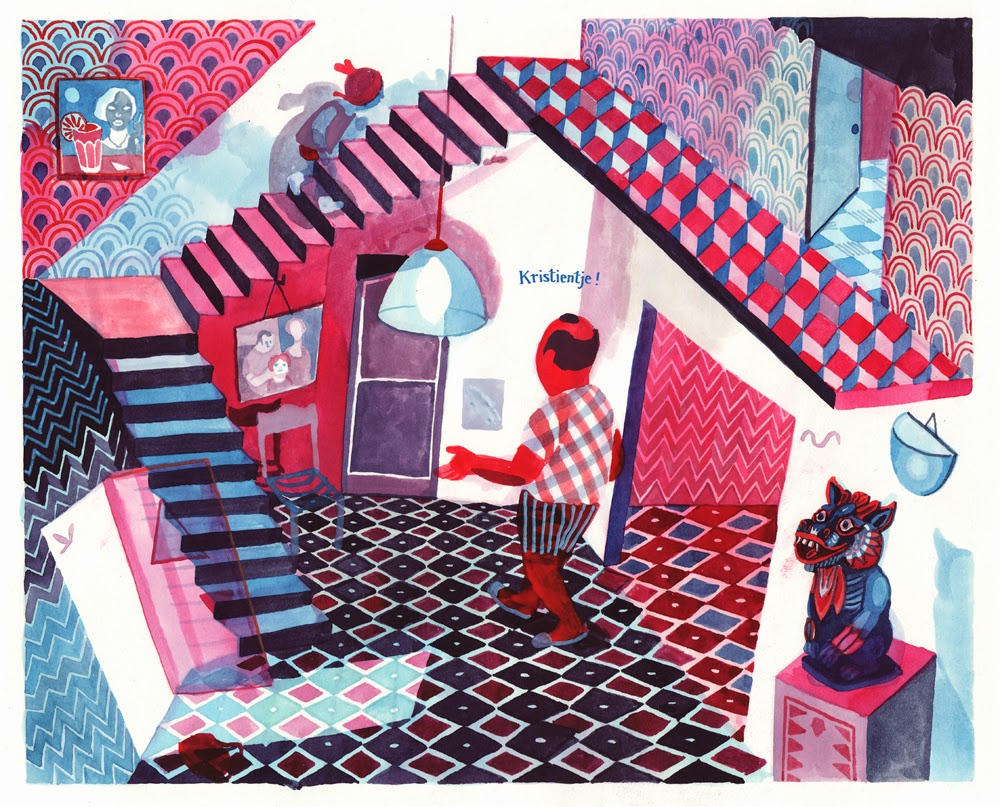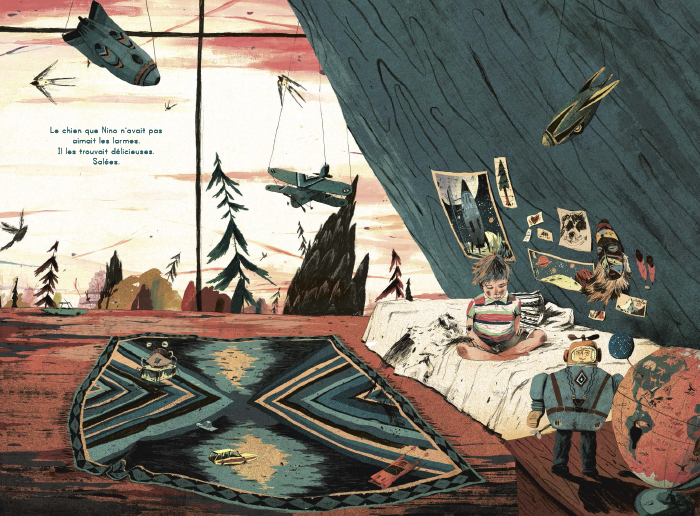Colour meanings and symbolism depends hugely upon cultural heritage. For the purposes of this post, I’m looking at European illustration and the basic associations made in this part of the world.
During the course of my research, I’ve been looking at the work of illustrators that I’ve never seen before. Primarily this is because my style is whimsical and humour based rather than having any real weight in terms of dramatic effect or heavy detail, so my research for live projects typically involves looking at similar styles.
My interest in symbolism within picture books has obviously brought lots of new reading matter my way. Of particular note are Panther (Evens, 2016) and Le Chien Que Nino N’avait Pas (van de Vendel & Van Hertbruggen, 2014).


The use of pattern and expression in this graphic novel are beautiful. Watercolour washes and expressive lines are used to convey a huge range of emotions within the characters. The content is very dark and there is an ambiguity right the way through; a hidden meaning or subtext that makes you feel hazy and wonder if your interpretation of the scenes is right. This results in uncomfortable realisations part way through. The switches between a bright and full palette to reds and blues is extremely effective at causing an emotional shift in the viewer. It creates a sinister atmosphere without, at the beginning, explanation. I’m particularly attracted to the scenes where washes have been used to layer the scenes. The cover is particularly well executed, using pattern and colour to remove the hierarchy of the elements and the composition is chaotic. Everything is obscured in plain sight.

The first thing that drew me to Le Chien Que Nino N’avait Pas were the colours and expressive painting style. Each spread looks like a work of fine art, packed with symbolism, but far more subtle than the work of Anthony Browne, although the theme is very similar to Browne’s ‘Into The Woods’. Blotches of colour and unresolved facial expressions and poses give this style a grittiness that feels very true to life. The disinterested Grandma always facing away from the reader is always reading, glass of wine at her feet. The protagonist’s father is a pilot so it’s clear that he travels a lot and Nino (his son) is lonely. We sense this from the start as there are planes, space shuttles, globes, cultural artefacts and birds threaded throughout. Nino has an imaginary dog that is expressed in line alone. The juxtaposition of the reality and fantasy element works beautifully to express the relationship between a boy and his imaginary friend, and the purpose that his companion serves.
Refs:
EVENS, B. (2016) Panther. London: Drawn & Quarterly
VAN DE VENDEL, E. & VAN HERTBRUGGEN, A. (2014) Le Chien Que Nino N’avait Pas. Paris: Didier Jeunesse.

These are beautiful illustrations – they create a world. The colour is very expressive. It shows how well a limited palette can work to particularly good effect. It creates coherence.